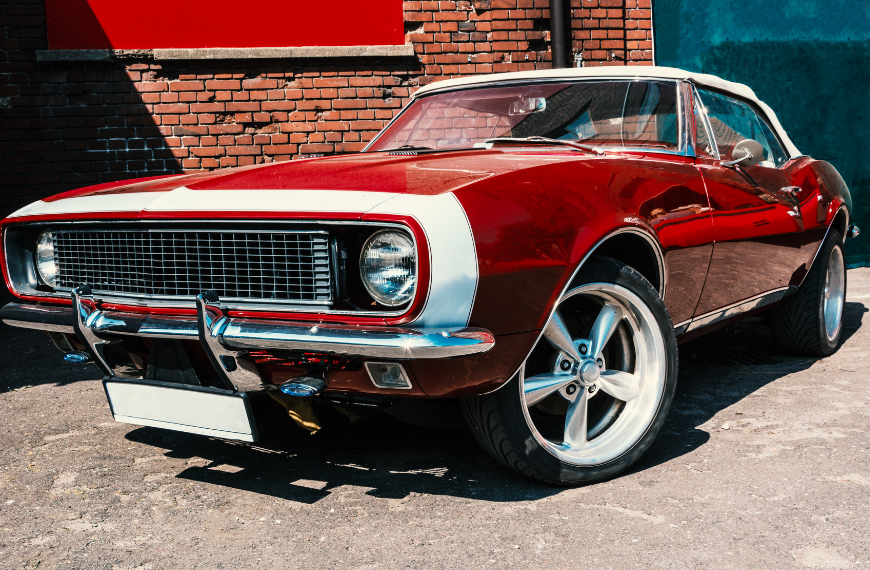Picture a muscle car in your head. Is it black or red? Probably one of those deep shades of red that won’t show the dirt too much. You’re probably picturing a tight frame with lots of horsepower. If I ask you to name the most famous muscle car, you’re likely to give me one of three names: the Ford Mustang, the Chevy Camaro, and the Dodge Charger.
The trick is … only one of these is right.
What Makes a Muscle Car?
A muscle car is true to its name. It’s all about strength. Your typical muscle car is a 2-door American-made coupe, with a mid-size or full-size frame built tight for performance. What makes the muscle car, well, muscle is the engine. Almost universally, muscle cars possess big-block V8 engines. This gives them a lot of speed, making them good drag racers.
What a muscle car has in speed, however, it often lacks in maneuverability. The focus on power and the large engine comes with a price. While your typical muscle car can top-out quickly, its strength comes in the straight-aways, not in handling the curves.
This is why muscle cars make for good drag racers, where reaching top speed is more important than maneuverability.

What Makes a Pony Car?
Like the muscle car, a pony car is an American-made 2-door coupe. What sets it apart from its cousins, however, is its size. Pony cars are built with smaller, sportier frames than muscle cars. The engine is also smaller, typically a small-block V6 or V8 engine.
Size has a huge effect on performance. Where the muscle car is built for drag speed, the pony car is built for maneuverability. Like its namesake, the pony car is small, agile, and fast. It won’t win a drag race against a muscle car, but it will win the street race when the muscle car fails on the tight turns.
Now that you know the difference between muscle cars and pony cars, you have probably guessed that the Ford Mustang is the above-mentioned pony car.
Isn’t It a Distinction Without a Difference?
These days, the terms muscle car and pony car are used interchangeably. This isn’t just a matter of linguistic drift. Car manufacturers muddied the waters when they began putting larger V8 engines into vehicles like the Mustang and Camaro. People wanted more muscle in their sports cars. Who knew?
While the specs have drifted between the two cars, muscle cars and pony cars are each unique vehicles, with rich history and beloved iterations, especially in the 60s and 70s. If you’re a nerd for cars, a clear difference remains between the two classes of vehicles. Muscle cars are mid-size to full-size frames – always – with a large V8 engine. That means if the wheelbase is 110 or under, you have a pony car.
Give Your Car Some Muscle
Whether you have a muscle car, a pony car, or a reliable family car, you want to keep it in top condition. If you’re looking for a tune-up, body repair, restoration, or want to take advantage of our Dyno Tuning, contact us today. We’ll help you make the most of your vehicle.




